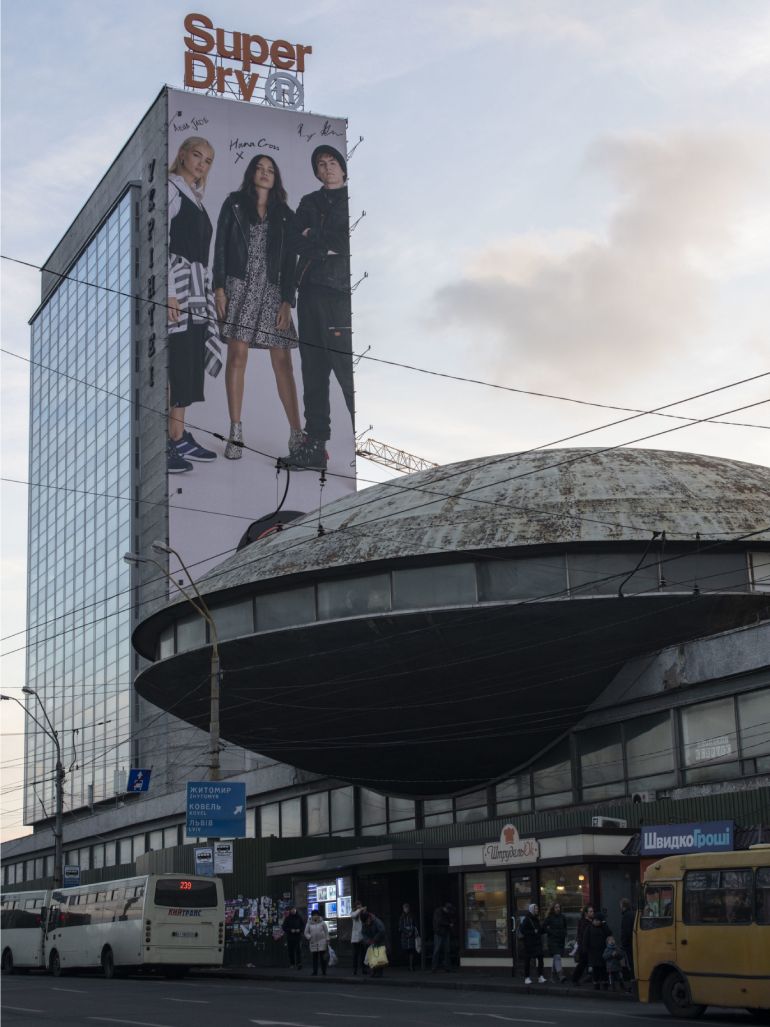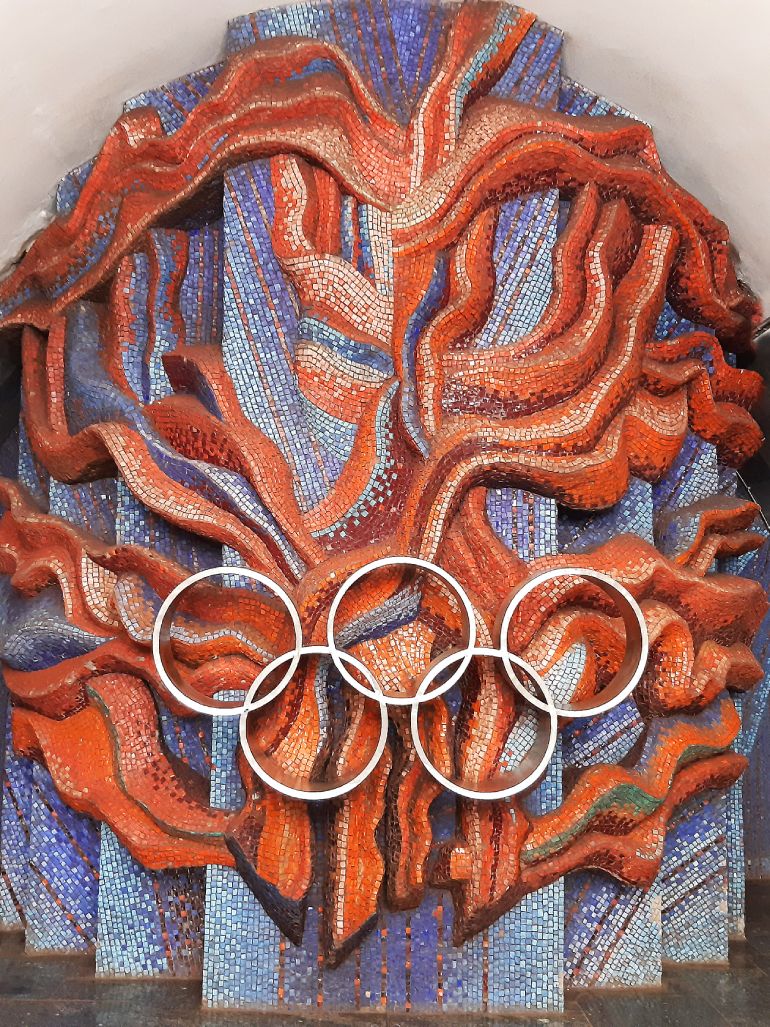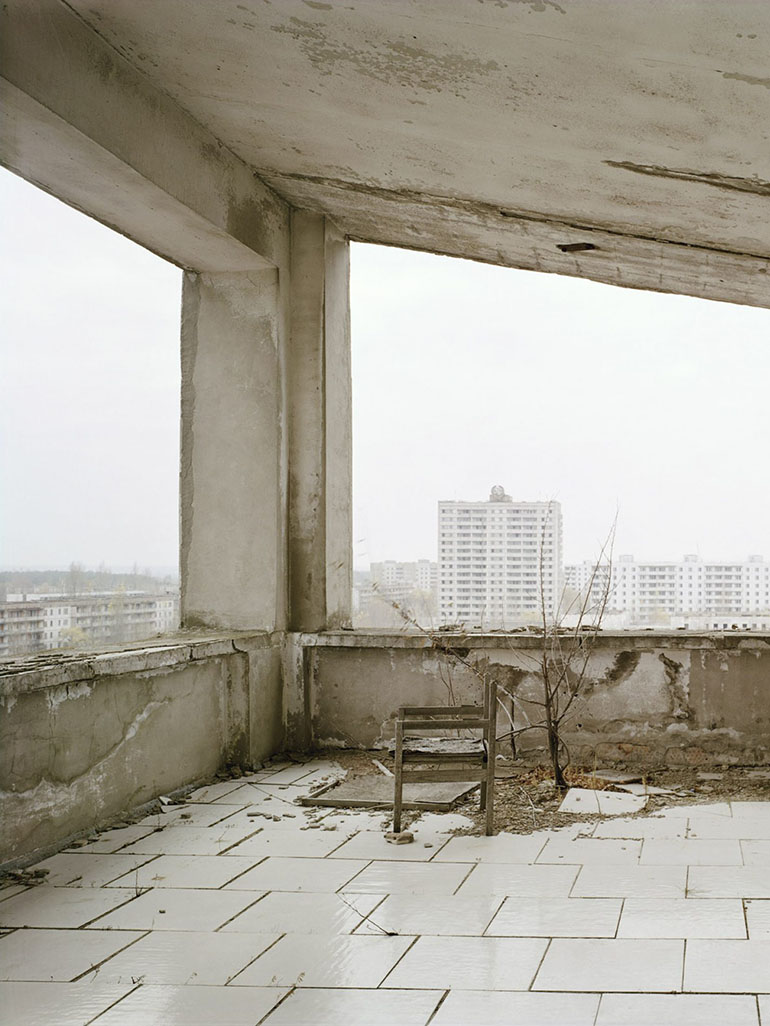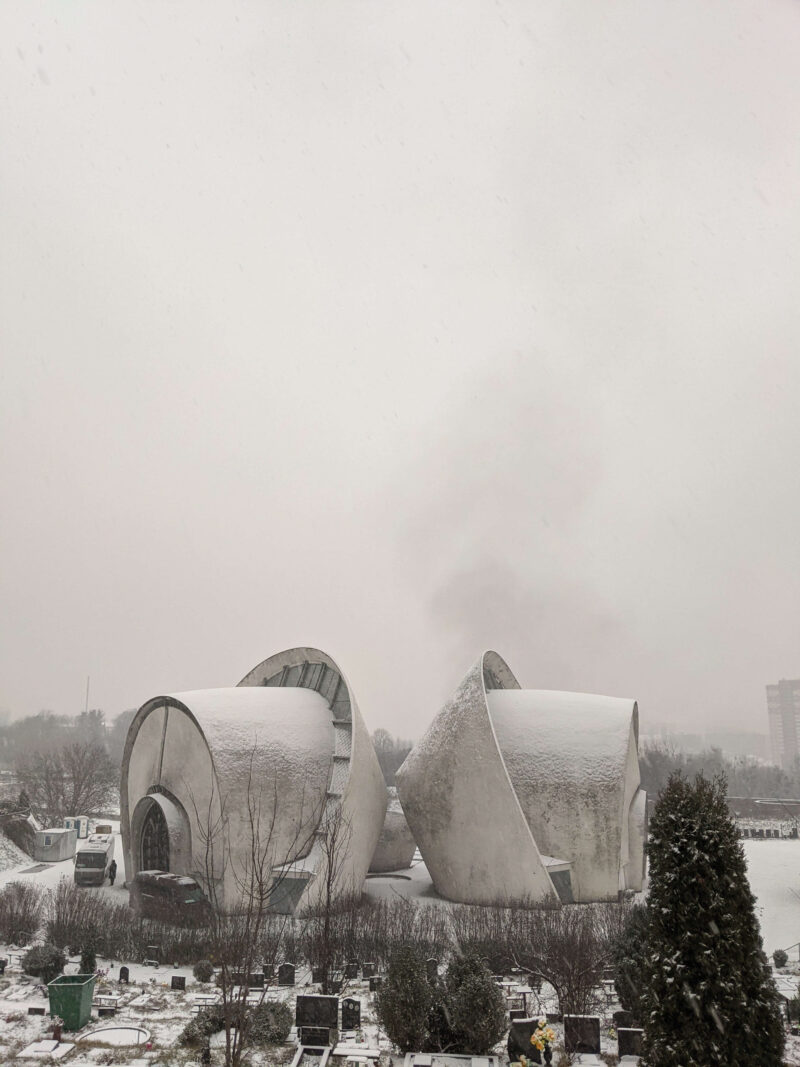
Baikova St, 16, Kyiv, Ukraine, 03039 Copy to clipboard
50.415215, 30.502203 Copy to clipboard
Before you go
Guidelines: Maintain a respectful demeanor throughout your visit, as the site is a place of mourning for many.,
Photography: Photography is allowed, but be mindful of the context and refrain from using flash.
Best visit time
The optimal time to visit is during the spring and autumn months when the weather is mild and the surrounding landscape is visually appealing.
Early morning hours are recommended to avoid crowds, as peak visitation tends to occur later in the day, providing better lighting conditions for photography.
Directions
Public transport
Bus: Take bus to Baikove Cemetery stop, then walk approximately 300 meters to the crematorium.
Metro: Use Metro Line 2 (Blue Line) to Palats 'Ukrayina' station, then take bus or trolleybus to Baikove Cemetery.
Car
Drive via Holosiivskyi Avenue and turn onto Baikova Street. Limited parking is available near the cemetery entrance.
Walking
From Palats 'Ukrayina' metro station, walk southeast along Velyka Vasylkivska Street, then follow Baikova Street to the cemetery (1.7 km / 25 min walk).
Introduction
The Kyiv Crematorium is a striking neo-modernist concrete structure nestled on the outskirts of the Ukrainian capital, Kyiv. It marks a turning point in how Ukrainian society addresses death. Built when cremation was a contentious subject due to historical trauma, the design aimed to create a therapeutic environment, free from associations with destruction.
Cremation was a thorny subject in Ukraine when the idea of building a crematorium in Kyiv was brought forward. That is partly because of the Second World War genocide and subsequent incineration of Jews in Ukraine off the back of the horrors of the Nazi massacre at Babi Yar. With that in mind, the larger complex known as Memory Park was designed to delink the structure from any association with the cremation process.
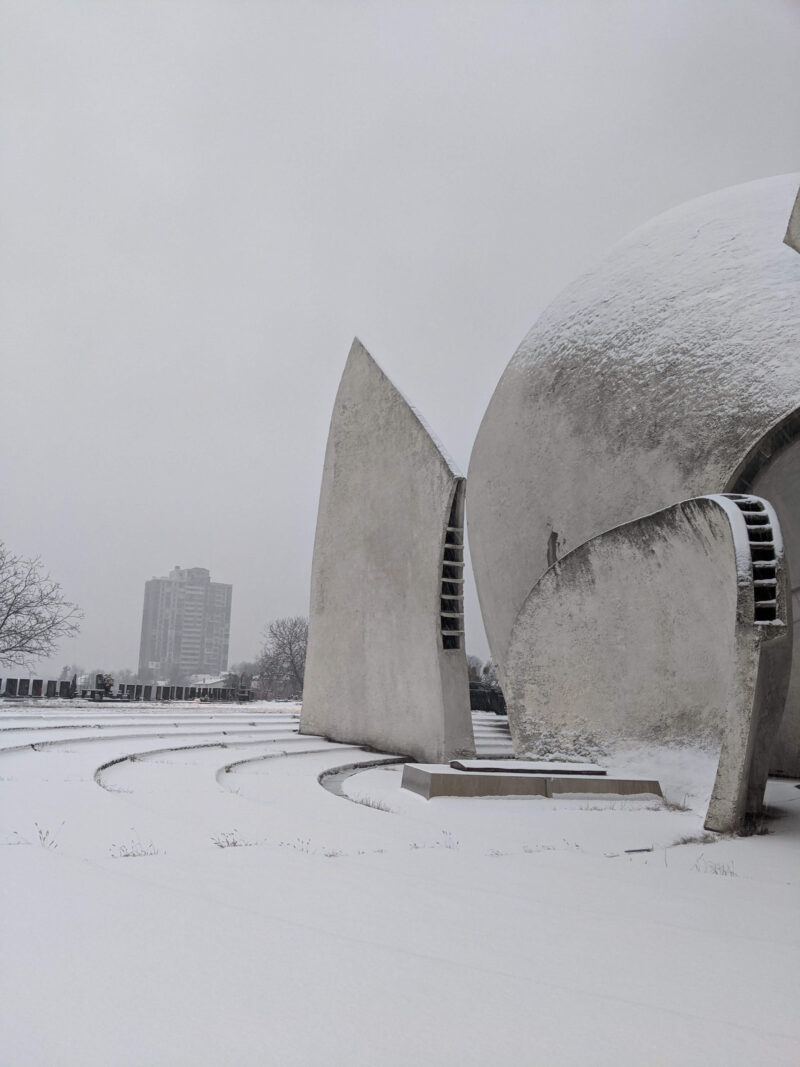
To avoid associations with World War II and concentration camps, the architects aimed to create a space that would serve as a tranquil memorial, encouraging reflection rather than evoking destruction. The concept of Memory Park was conceived as a place of contemplation, far removed from the grim connotations of traditional crematoriums.
Initially, the project faced significant resistance. Many architectural workshops in Kyiv refused to take it on, as working on a crematorium was associated with the grim legacy of World War II atrocities. In fact, as artist Vladimir Melnychenko recalled 1:
No one wanted to leave their name as the author of such an object.
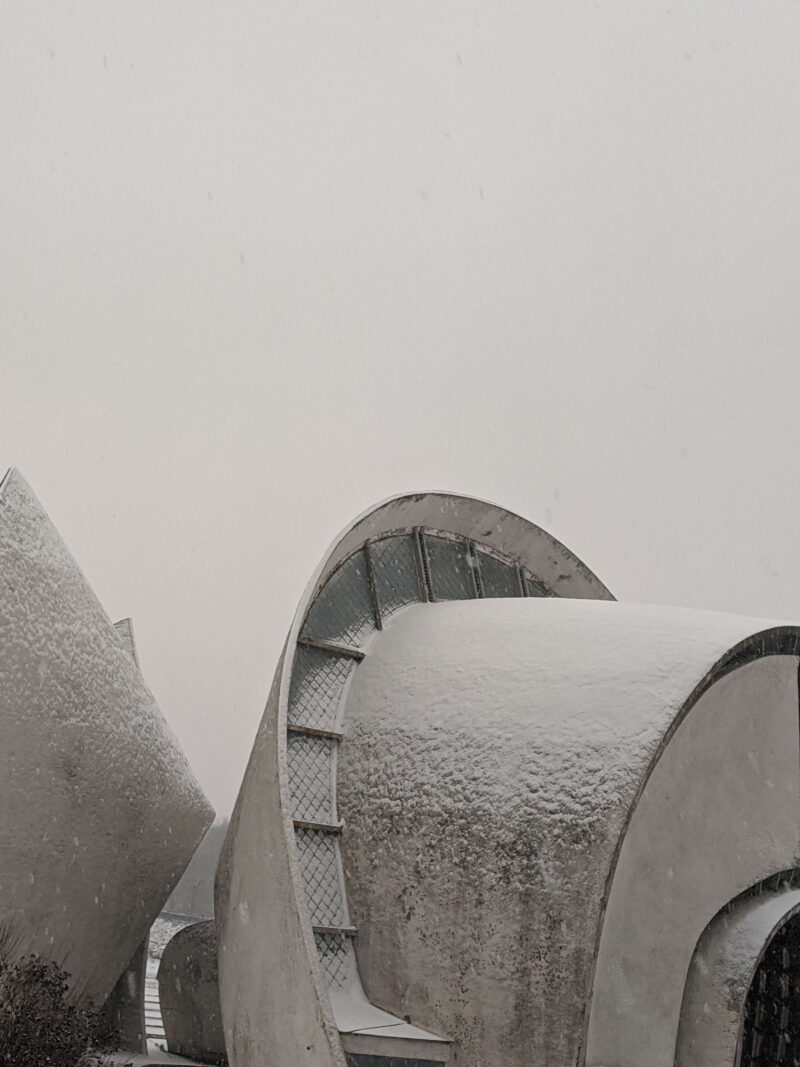
Today, the Kyiv Crematorium is one of the most prized Soviet-era neo-modernist projects. It comprises a series of white curved concrete structures designed to create a therapeutic and serene aura for the mourners and funeral attendees who bid farewell to their departed loved ones.
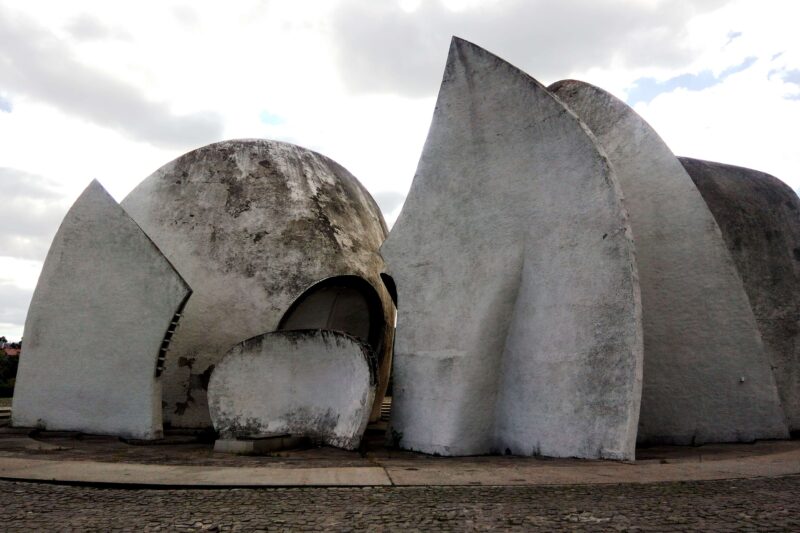
The Kyiv Crematorium
The oddly-designed concrete complex, the only crematorium in Kyiv, is adjacent to Baikove Cemetery and was constructed in 1975. From an architectural and art standpoint, the crematorium is one of the most cited buildings in the modernist architecture of Kyiv. It was designed by lead architect Abraham Miletsky, in collaboration with the artist-architect duo Vladimir Melnychenko and Ada Rybachuk, who were primarily responsible for the artistic vision of the complex.
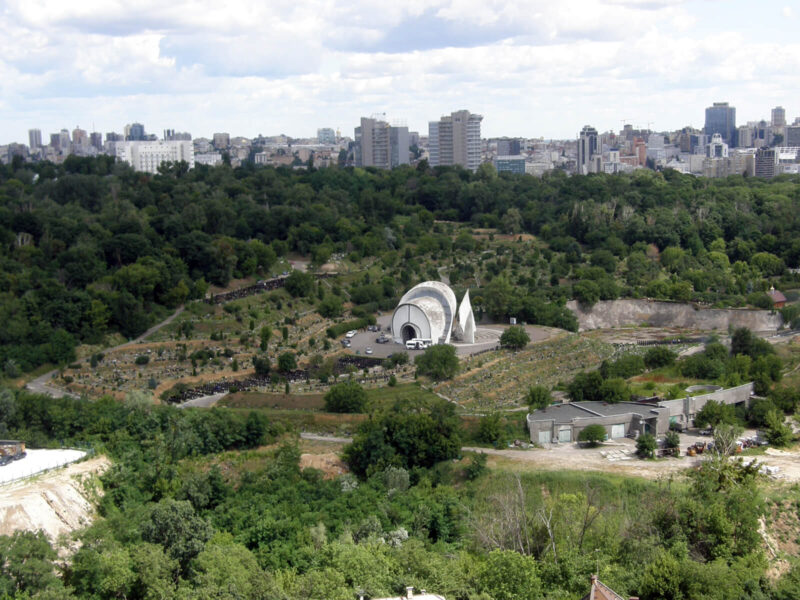
The building complex consists of three expressive and organic Halls of Farewell, each featuring a dome that resembles a burning flame. Six gas-fired furnaces at the bottom of the structure help with the cremation of 20 to 30 bodies per day. The Memory Park complex also comprises halls for military & civil honors and memorial services.
The structure looks so futuristic that few would guess at first glance that it’s a crematorium. — Yuriy Tatsiiy (former Deputy Director of the Department of Urban Planning and Architecture, Kyiv City State Administration, 2020, liga.net 2)
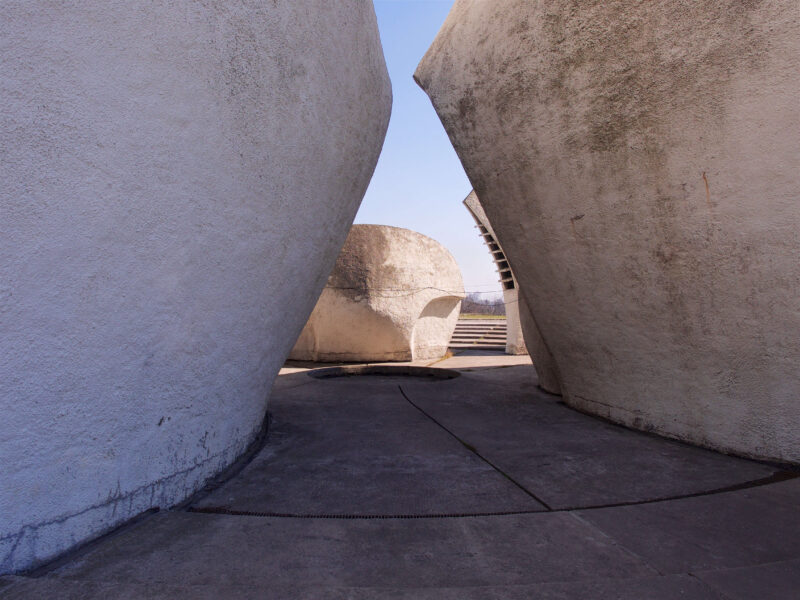
The architects Ada and Vladimir deliberately ensured that the white concrete building didn’t have any right angles or clean lines typical of traditional buildings. In fact, their collaborator architect Miletsky had envisaged the building a classic rectangular structure on the Baikova Cemetery’s terraced slope, but the duo quashed this design.
The completed structure included a 75-meter long underground tunnel to connect the farewell halls with the crematorium itself. They also incorporated a columbarium on the slopes around the crematorium building complex.
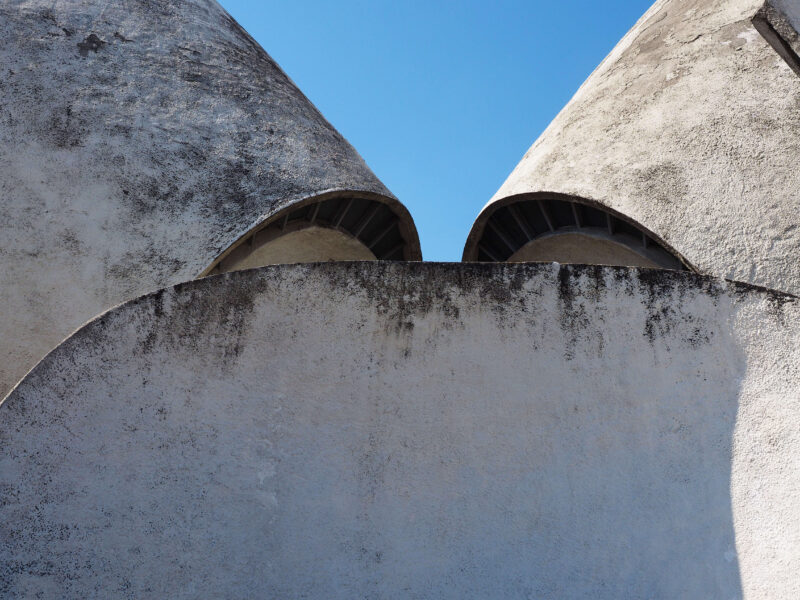
Wall of Memory
What’s more, Vladimir and Ada envisaged a design with beautiful stained glass windows 3 to add more aura and a sense of airiness to the crematorium, but their aspirations never came true.
They also created the Wall of Memory, a monumental bas-relief spanning approximately 213 meters and covering a total area of 2,200 square meters, designed to depict the universal human experience of life and death through allegorical scenes of creativity, struggle, and renewal.
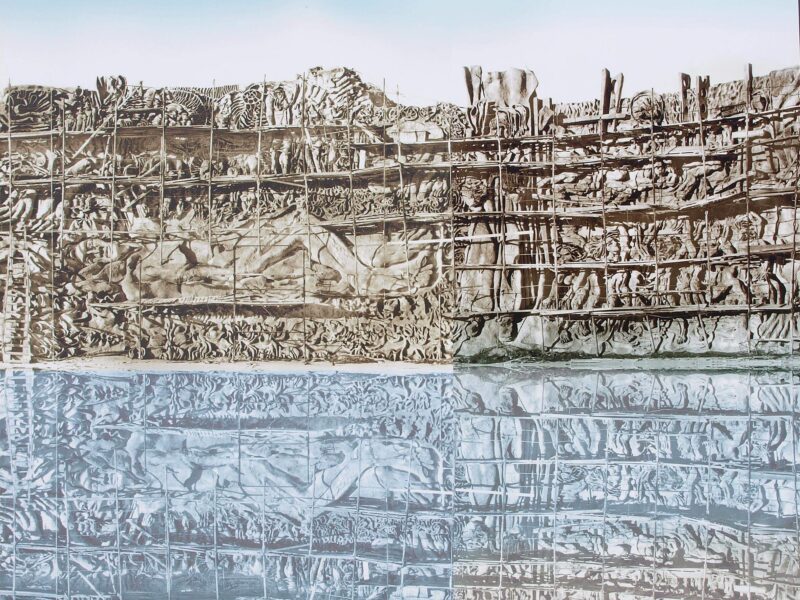
It took the architects and artists around a decade to mold all the sculptures, construct the essential frames, and prepare the wall. However, they didn’t manage to complete the monumental project due to the harsh political climate.
The wall was nearly completed by early 1982. However, before its official unveiling, Soviet authorities deemed it ideologically inappropriate, claiming that it didn’t align with the Soviet realism 4 principles, and ordered the bas-reliefs to be covered with concrete, effectively concealing the artwork for decades.
This decision was a crushing blow for Ryabachuk and Melnychenko. The concealment not only denied them artistic recognition but also interrupted their vision of creating a place where people could contemplate life, death, and memory.
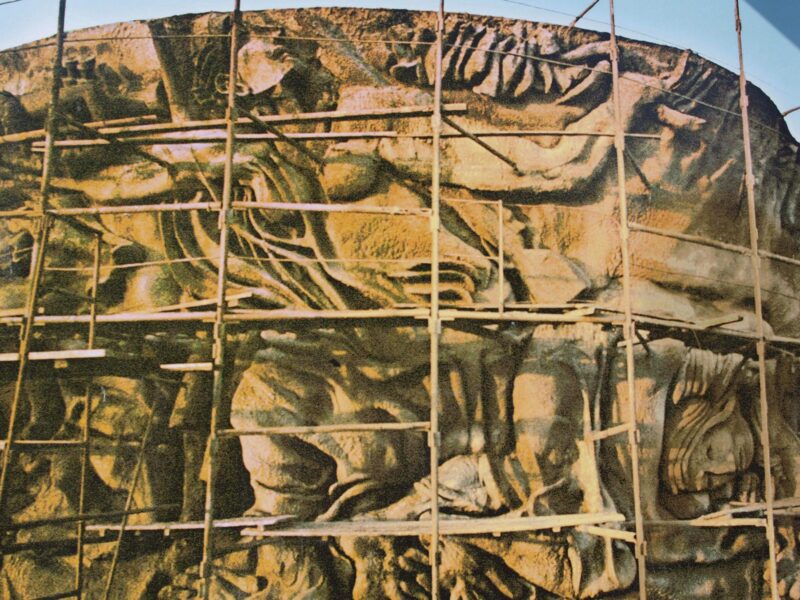
Restoration efforts have since begun, with 120 square meters restored by late 2021. Despite these efforts, most of the wall remains hidden, and full restoration has yet to be achieved. While the Wall of Memory was fully constructed, it was never officially presented in its entirety due to the Soviet-imposed concealment.
The Wall of Memory is the most important work in our lives.— Volodymyr Melnychenko (Радіо Свобода 5)
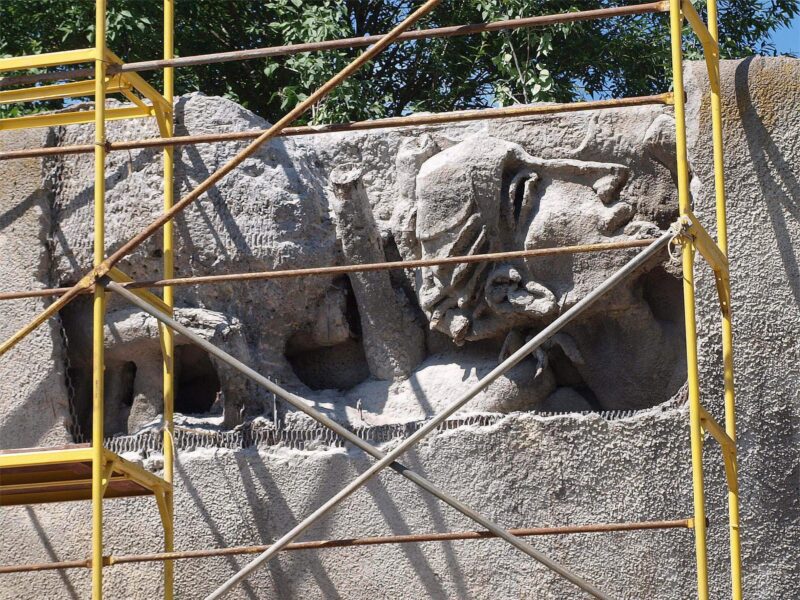
Meet the artists, designers & architects
The Kyiv Memory Park was designed and constructed over a long period between 1968 and 1981. The lead architect was Abraham Miletsky. The husband-wife duo of Vladimir Melnichenko and Ada Rybachuk was responsible for the design, concept, architectural invention of technology for creating the Wall of Remembrance and the architectural plastic copyright modeling of the crematorium complex. A. Podgorny did the geometric construction of the Halls of Farewell.
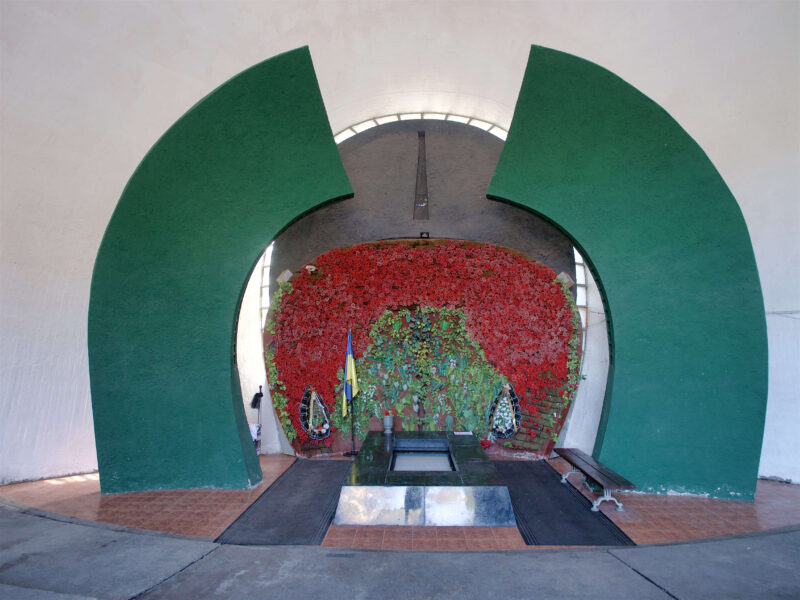
Restoration efforts
In the years following the covering of the wall with concrete, artists and well-wishers from America and Europe were ready to put in some money and effort to restore the pane. But the Soviet leadership and authorities that fought for the independence of Ukraine were unrelenting and gave the restoration appeals a deaf ear.
Over the years, artists from many corners of the world have shown interest in donating to the restoration efforts to remove the concrete and reveal the Wall of Remembrance in all its glory.
2 min 17 sec
While Kyiv authorities have shown limited commitment to a full restoration, some progress has been made: A 6-square-meter patch of the bas-relief was restored in May 2018 during the Kyiv Art Week festival.
More recently, in 2024, a major restoration plan has been outlined, including repairs to structures and replacement of outdated equipment. However, it appears that this plan is in preparation stages, with scientific studies completed, a project prepared, and awaiting final approval before work starts in spring 2025.
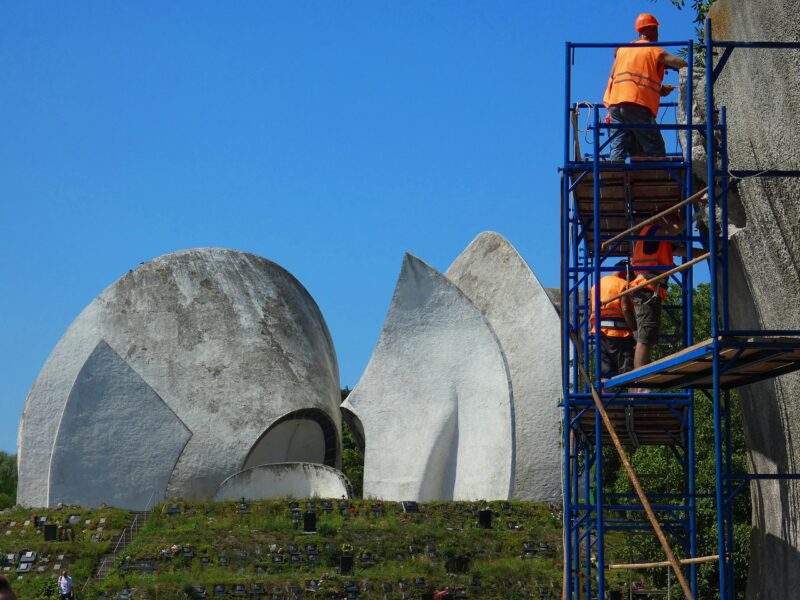
Conclusion
The Kyiv Crematorium is an impressive example of neo-modernist architecture, offering a fresh perspective on how we design spaces for mourning. Its presence encourages us to rethink how grief, memory, and art can come together in one place.
Over time, its purpose has grown beyond its original intent. What was once a bold and unusual project now feels like a powerful symbol of healing and coming to terms with the past. It shows how architecture can confront painful histories while also providing a space for reflection and peace.
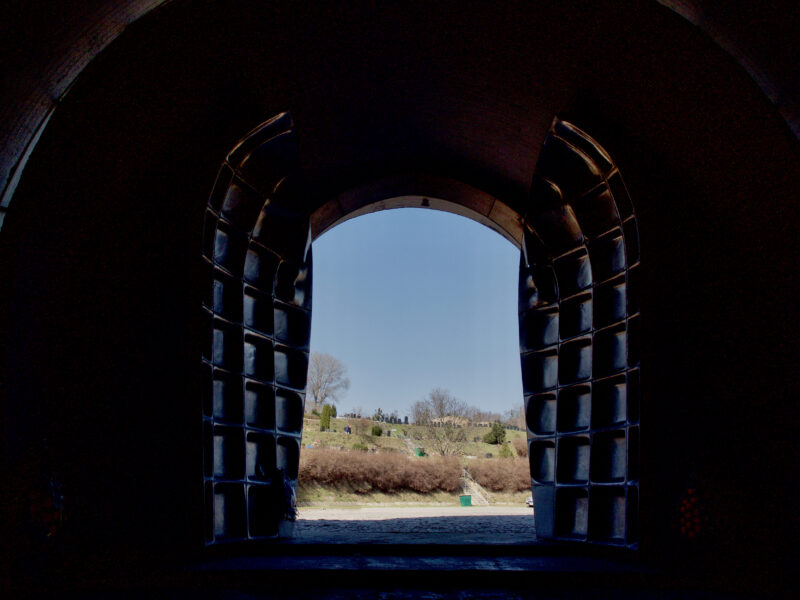
Explore nearby
 Kiev’s UFO – A modernist masterpiece2 km away
Kiev’s UFO – A modernist masterpiece2 km away
 Nadav Kander's visit to ChernobylPhoto documentation (2004)98 km away
Nadav Kander's visit to ChernobylPhoto documentation (2004)98 km away
